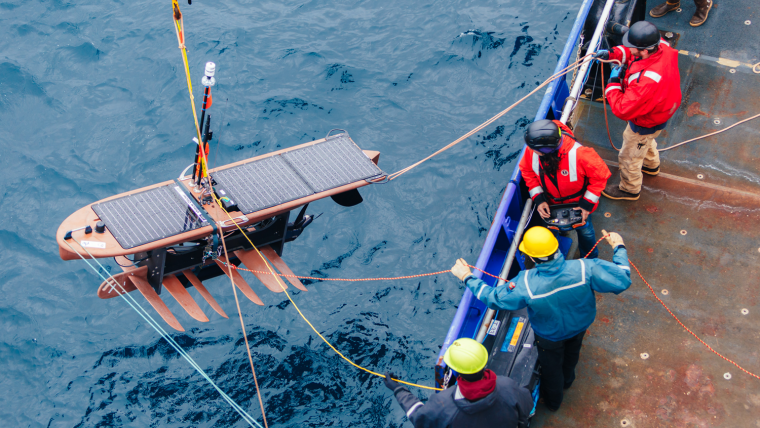How an Unmanned Surfboard Survives the Antarctic Storms
Video Included
This week, the University of Washington (UW) launched an unmanned surfboard to research the cold and stormy waters north of Antarctica. The project will first use the Wave Glider to investigate the summer conditions near Palmer Station on the Antarctic Peninsula, to better understand how the warming ocean interacts with ice shelves that protrude from the shore. In February 2020, the cybernetic surfboard plans to head north into Drake Passage, one of the stormiest seas on the planet. The device uses wave power to propel itself, so the monster waves common in the Antarctic Circumpolar Current can help it move forward, writes Hannah Hickey in a recent news report.
Connections Between Oceans and Atmosphere
According to principal investigator Jim Thomson, an oceanographer at the UW Applied Physics Laboratory and professor of civil and environmental engineering, the main purpose of the project is to learn more about the connections between the ocean, atmosphere and sea ice in this dynamic environment. As it surfs along, the board will measure turbulence in the upper part of the Southern Ocean, which will help to measure how heat and other properties move between the water and the air. The board will send information back via satellite, and researchers will retrieve it once the mission has been completed.
More Capabilities Available
In 2016, the UW sent the same autonomous platform across the 500-mile channel between Antarctica and Argentina, with resulting papers in Oceanography magazine and the Journal of Atmospheric and Oceanic Technology. This time, the board has more capabilities, including a winch that can lower an instrument to measure water temperature, salinity and pressure — key oceanographic observations — down to a depth of 150 metres (about 160 yards).
Caption: The Wave Glider is being lowered into the water in the Beaufort Sea in September 2018. The black solar panels provide electrical power, the white bulb provides satellite communication and the orange paddles drop down to give a forward push in wavy seas. (Courtesy San Nguyen)
More info can be found here.














